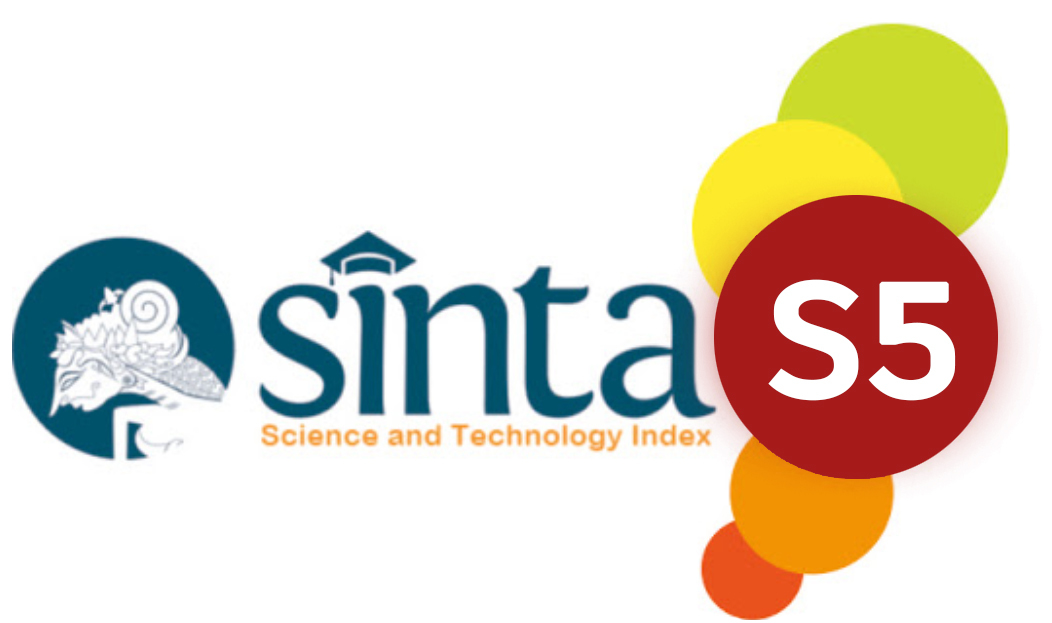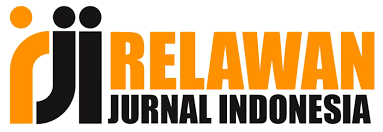Implementation of E-Money as Student Payment at Al-Amien Islamic Boarding School from an Islamic Economic Perspective
Abstract
Humans, as social beings, are required to constantly innovate in economic activities, especially in the use of digital technology, particularly during the COVID-19 pandemic. Currently, cashless payment systems or e-money have become a solution to the demands of the times. This includes SMA Tahfidh Al-Qur’an PP. Al-Amien Prenduan, which also implements e-money as a payment tool in transactions within the PP. Al-Amien Prenduan environment. This is what prompted the researcher to delve deeper into the implementation of e-money as a student payment tool from an Islamic perspective. The research problems are: how is the implementation of e-money as a student payment tool from an Islamic perspective, and what are its impacts on students, guardians, and the boarding school? This research uses a qualitative approach at SMA Tahfidh Al-Qur'an PP. Al-Amien Prenduan. Data collection was carried out through direct field observations, semi-structured interviews, and documentation methods with all related sources. Data analysis was performed using the Miles, Huberman, and Saldana theoretical model. The results show that the implementation of e-money as a student payment tool runs as expected by all parties and has a positive impact on everyone at PP. Al-Amien Prenduan. For example, students do not lose money, it prevents corruption, and it facilitates guardians when sending money, and students no longer have to wait in long lines when shopping at the boarding school-owned business units. From an Islamic perspective, the implementation of e-money as a student payment tool is allowed according to the sharia contracts that occur when transacting based on evidence from the Qur'an and Hadith, except if there is maysir (gambling), riba (usury), gharar (uncertainty), and haram (prohibited) elements in the e-money implementation. This research provides a perspective on the use of e-money as a payment tool in boarding schools or other educational institutions.
Keywords
References
Abdul Wahab, Solichin. 2004. Analisis Kebijaksanaan: Dari Formulasi Ke Implementasi Kebijaksanaan Negara. Jakarta: Bumi Aksara
Alif Nur Rahman, (2020), yang berjudul (Aplikasi E-Payment Berbasis Finger print Untuk pelayanan Transaksi (Studi Kasus : SMK Islam Tanwirul Afkar Krian Sidoarjo). Ubiquitous: Computers and its Applications Journal, Univ.Ma’arif Lhasyim Latif Sidoarjo. Vol. 3 (01) : 622-7983
Annisa Nur Salam, Marwini, ‘E-Money Based Boarding School Cooperative Development Model (Kopontren) As An Sharia Economic Acceleration Effort In Indonesia’, Journal of Islamic Finance and Banking, 2.1 (2020), 103–17
Argantara, Z R, ‘Faktor-Faktor Minat Nasabah Memilih Asuransi Syariah Pasca Berlakunya BPJS Kesehatan (Studi Pada Nasabah AJB Bumiputera 1912 Cabang Syariah Yogyakarta)’, Assyarikah: Journal of Islamic Economic …, 1.2 (2020), 139–50
Argantara, Zaid Raya, and Ahmad Choiri, ‘The Effect of Banking Digitalization Through Self-Service Technology on Satisfaction and Loyalty’, Iqtishodiyah: Jurnal Ekonomi Dan Bisnis Islam, 9.2 (2023), 187–95
Argantara, Zaid Raya, and Zainurrohman Zainurrohman, ‘Pencatatan Akta Notaris Akad Syariah Oleh Notaris Non Muslim Perspektif Hukum Islam’, Masyrif : Jurnal Ekonomi, Bisnis Dan Manajemen, 2.2 (2021), 157–66
Bhakti, Bprs, and Sumekar Cabang, ‘Zaid Raya Argantar Dan Nur Azizah Ekomadania Volume 6. Nomer 2 Januari 2023’, 6 (2023), 101–9
Huang, Zixuan, Amina Lahreche, Mika Saito, and Ursula Wiriadinata, ‘E-Money and Monetary Policy Transmission’, Internasional Monetary Fund, 2024, 3–38
Rafiqi, Iqbal, and M Naufal Jazuli, ‘Problem Minimnya Minat Pengambilan Pembiayaan Di Perbankan Syariah : Studi Kasus UMKM Furniture Di Kabupaten Sumenep’, Assyarikah : Journal of Islamic Economic Business, 5.01 (2024), 100–111
Rafiqi, Iqbal, Miftahul Ulum, Moh Helmi Hidayat, and Achmad Jufri, ‘Risk Mitigation Strategy in Financing Without Collateral at PT . BPRS Sarana Prima Mandiri Pamekasan’, Journal of Islamic Economics Perspectives, 5.2 (2023), 94–104
Rafiqi, Iqbal, and Abd Wahid, ‘Analisis Manajemen Risiko Pada Tabungan Berhadiah Emas Di BPRS Sarana Prima Mandiri Pamekasan’, Jurnal Akuntansi Keuangan Dan Bisnis, 02.02 (2024), 268–73
Raya Argantara, Zaid, and Indaratul Khofifah, ‘Analisis Strategi Pemasaran Bprs Bhakti Sumekar Melalui Digital Marketing Dalam Menarik Minat Nasabah Zaid’, LAN TABUR : Jurnal Ekonomi Syari’ah, 5.2 (2024), 195–211
Raya Argantara, Zaid, Ahmad Rofiki, Muhammad Deni Putra UIN Mahmud Yunus, Sari Utami, and Kata Kunci, ‘At-Tasharruf; Jurnal Kajian Ekonomi Dan Bisnis Syariah Examining the Relationship Between Price to Earnings Ratio (PER), Inflation, and Stock Returns in Indonesian Sharia Banking from 2018 to 2022’, At-Tasharruf; Jurnal Kajian Ekonomi Dan Bisnis Syariah, 6.1 (2024), 68–77
Wu, Xueying, Muhammad Sadiq, Fengsheng Chien, Quang Thanh Ngo, Anh Tuan Nguyen, and The Truyen Trinh, ‘Testing Role of Green Financing on Climate Change Mitigation: Evidences from G7 and E7 Countries’, Environmental Science and Pollution Research, 28.47 (2021), 66736–50
Rahmatika, U., & Fajar, M. A. (2019). Faktor - Faktor Yang Mempengaruhi Minat Penggunaan Electronic Money: Integrasi Model Tam – Tpb Dengan Perceived Risk, Nominal : Barometer Riset Akuntansi Dan Manajemen, 8 (2): 274–284.
Ramadhan, Bima Shakti. 2012. “Peningkatan Keamanan Kartu Kredit Menggunakan Sistem Verifikasi Sidik Jari di Indonesia” dalam Prosiding Seminar Ilmiah Nasional Komputer dan Sistem Intelijen. Vol (7) September 2012
Ridwan Firdaus (2018), E-Money Dalam Perspektif Hiukum Syariah Islam Jurnal Tahkim. Universitas Islam Negeri Sunan Gunung Djati Bandung. Vol. XIV (01)
Rifqy Tazkiyyaturrohmah (2018), Eksistensi Uang Elektronik Sebagai Alat Transaksi Keuangan modern. Jurnal Muslim Heritage, Institut Agama Islam Riyadlotul Mujahidin Ponorogo. Vol.31 (01)
Rizky Wady Abdulfattah dan Rachmat Rizky Kurniawan, “Uang Elektronik Dalam Perspektif Islam”, Ekonomi dan Perbankan Syariah, h. 94
RMOL.co, dalam http://ekbis.rmol.co/read/2011/07/10/32509/Penggunaan-E-Money-CumaDidominasi-Masyarakat-Tajir-html, diakses 21 Sept 2023
S. Nasution, Metode Reseach (Penelitian Ilmiah )-Ed 1, Cet. 6 , Bumi Aksara, Jakarta, 2003, hal 113
S. Margono, Metodologi Penelitian Pendidikan, Rineka Cipta, Jakarta,1997,
hal 36
Septiano Pratama, “Menggunakan Mesin Pencari Google dengan kata kunci uang elektronik” dalam http://www.bank-indo.com/pengertian-uang-elektronik-dan-macam-bank-penyedianya/. Diakses tanggal 14 September 2023
Sudianto, Anisatur Rahmah, Supandi , (2021). Implementasi Elekronifikasi Pembayaran santri TMI Pondok Pesantren Al-Amien Prenduan,Jurnal Al-Ulum Universitas Islam Madura.8 (1) : 2549-3833
Sugiyono. Metode Penelitian Pendidikan Pendekatan Kuantitatif, Kualitatif, dan R&D,Bandung Alfabeta, 2013, h. 298
DOI: 10.28944/masyrif.v5i1.1800
Refbacks
- There are currently no refbacks.

This work is licensed under a Creative Commons Attribution-NonCommercial-NoDerivatives 4.0 International License.






